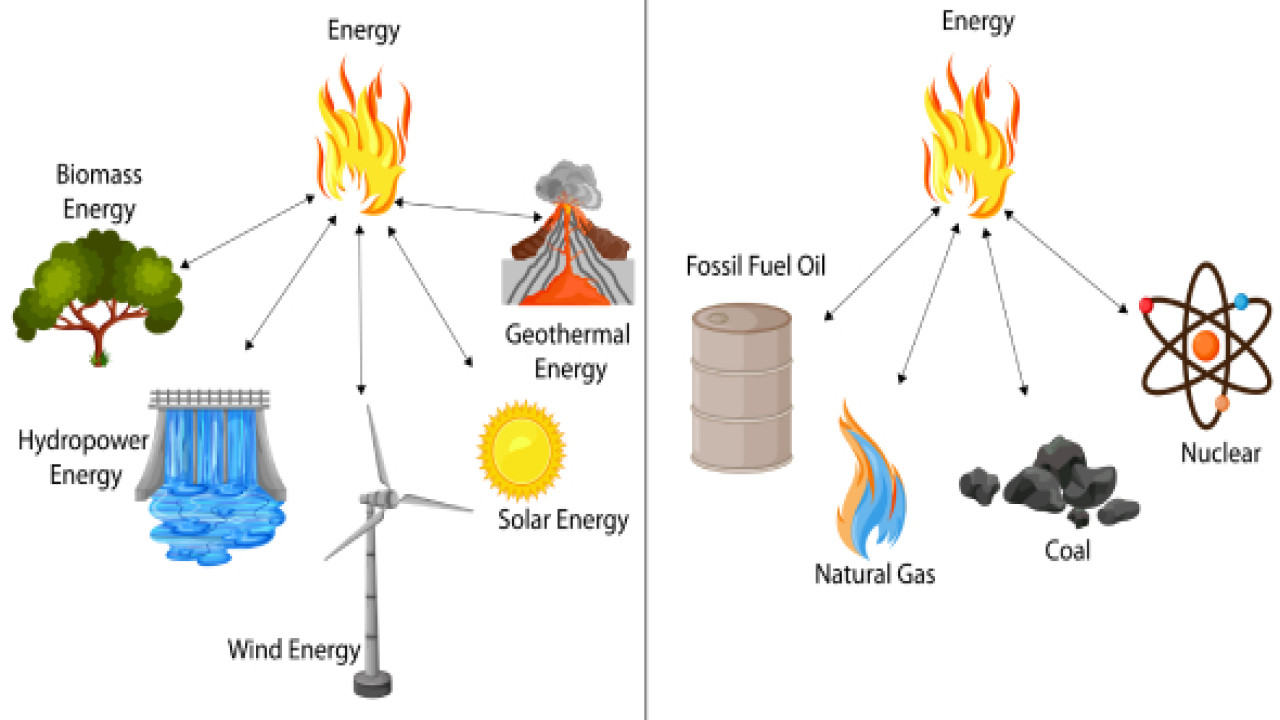Which Image Shows a Nonrenewable Resource?
In today’s world, the concept of sustainability is front and center in global conversations. From renewable energy to sustainable agriculture, the importance of environmental consciousness has never been clearer. But while the world shifts toward renewable resources, it's equally crucial to understand the critical role of nonrenewable resources. These finite materials, once depleted, cannot be replenished within a human time scale. But how do we identify them, especially in the context of images or representations? Let’s dive into this crucial topic and explore how images can highlight these irreplaceable resources.
What Are Nonrenewable Resources?
Nonrenewable resources are natural resources that cannot be replaced on a human timescale. Unlike renewable resources, which can be replenished relatively quickly (such as wind or solar energy), nonrenewable resources take millions of years to form and are exhaustible once consumed. Examples include fossil fuels (like coal, oil, and natural gas), minerals (such as gold, copper, and uranium), and nuclear fuels. These resources are fundamental to modern society, fueling everything from transportation to electricity generation. However, their depletion poses a significant threat to the planet’s long-term sustainability.
Identifying Nonrenewable Resources Through Images
Images can be an incredibly effective way to communicate the presence of nonrenewable resources. When analyzing images, it’s important to look at what’s being depicted: natural landscapes, industrial activities, or specific materials. Here are some key indicators that will help identify nonrenewable resources in images:
-
Coal Mining: Images showing large-scale mining operations, particularly coal mines, immediately point to a nonrenewable resource. Coal is one of the most widely used fossil fuels and is critical in electricity generation and industrial manufacturing. However, it is also a primary contributor to environmental pollution and greenhouse gas emissions.
-
Oil Fields and Drilling Platforms: Images of oil rigs or vast oil fields are quintessential representations of nonrenewable resources. Oil, alongside coal and natural gas, is a nonrenewable fossil fuel used in transportation, heating, and electricity generation. These images symbolize an industry that is deeply embedded in global economies, but one that faces growing scrutiny due to its environmental impact.
-
Natural Gas Extraction: Similar to oil, natural gas is extracted from deep underground reserves. Images of fracking sites, which involve hydraulic fracturing to extract natural gas, clearly show the exploitation of this nonrenewable resource. Natural gas is used for heating, electricity, and as a feedstock for various chemicals. Its impact on the environment is a hot topic, especially concerning methane emissions.
-
Mining of Precious Metals: Gold, silver, and other precious metals are finite, nonrenewable resources that are often depicted in images of mining operations. These metals are used in electronics, jewelry, and even in some medical applications. The extraction of these metals, however, comes with significant environmental costs, including habitat destruction and pollution.
-
Uranium Mining: Images related to the mining of uranium for nuclear energy production also represent nonrenewable resources. Uranium is used as fuel for nuclear reactors. While nuclear energy itself doesn’t produce greenhouse gases, the mining and disposal of uranium are fraught with challenges, including the risk of radioactive contamination and long-term environmental impacts.
The Environmental Impact of Nonrenewable Resources
The exploitation of nonrenewable resources has significant environmental consequences. As we extract and use these resources, we deplete what is available, and once they are gone, they are gone forever. The environmental impacts can include:
-
Pollution: The burning of fossil fuels such as coal and oil releases a variety of harmful pollutants, including carbon dioxide (CO2), sulfur dioxide (SO2), and nitrogen oxides (NOx). These pollutants contribute to global warming, acid rain, and other environmental issues.
-
Habitat Destruction: Mining and drilling activities often require large-scale land clearance, leading to the destruction of vital ecosystems. Forests, wetlands, and other natural habitats are bulldozed to access nonrenewable resources, leading to a loss of biodiversity.
-
Climate Change: The use of nonrenewable resources, particularly fossil fuels, is the leading cause of climate change. The CO2 released into the atmosphere from burning these resources traps heat and leads to rising global temperatures, severe weather patterns, and rising sea levels.
-
Resource Scarcity: As nonrenewable resources are depleted, the cost of extraction increases, leading to economic instability. Scarcity can cause price hikes and geopolitical tensions over resource ownership and access, especially in regions where these resources are abundant.
Moving Toward Sustainable Alternatives
While nonrenewable resources have powered the world’s progress for centuries, the shift toward renewable resources is essential for long-term sustainability. Solar, wind, and hydroelectric energy are just a few of the alternatives that can replace fossil fuels. Moreover, advancements in battery technology, sustainable agriculture, and waste recycling offer innovative solutions to reduce our reliance on finite resources.
In addition, technologies such as electric vehicles, green building practices, and carbon capture are becoming increasingly widespread. Governments, industries, and individuals are making strides toward mitigating the effects of resource depletion and finding sustainable ways to meet the world’s energy needs.
The Role of Education and Awareness
Raising awareness about nonrenewable resources, their environmental impact, and their eventual scarcity is key to fostering change. Through educational campaigns, informative media, and visual storytelling, individuals can be empowered to make informed decisions about resource use. For example, the depiction of images showcasing nonrenewable resources can help emphasize the urgency of transitioning to sustainable alternatives.
By learning more about these resources and their consequences, people are more likely to support policies and practices that prioritize environmental health and sustainability. Images that highlight nonrenewable resources, their extraction, and their impact on the planet can spark important conversations and inspire action.
Conclusion
Images are powerful tools that can help convey complex ideas and highlight critical issues. When it comes to identifying nonrenewable resources, images of mining, drilling, and extraction can vividly showcase the finite nature of these materials. Fossil fuels like coal, oil, and natural gas, along with minerals and metals such as gold and uranium, are all examples of nonrenewable resources that, once depleted, cannot be replaced on a human timescale.
As the world faces the harsh reality of resource depletion and environmental degradation, shifting toward renewable energy and sustainable practices is vital. By raising awareness through images and other media, we can foster a collective effort to protect the planet and ensure future generations inherit a world that thrives in harmony with nature.
References:
- United States Geological Survey (USGS). (2021). Nonrenewable Resources. Retrieved from https://www.usgs.gov/
- International Energy Agency (IEA). (2022). Nonrenewable Resources and Sustainability. Retrieved from https://www.iea.org/
- National Geographic. (2020). The Environmental Impact of Nonrenewable Resources. Retrieved from https://www.nationalgeographic.com/





Comments (0)